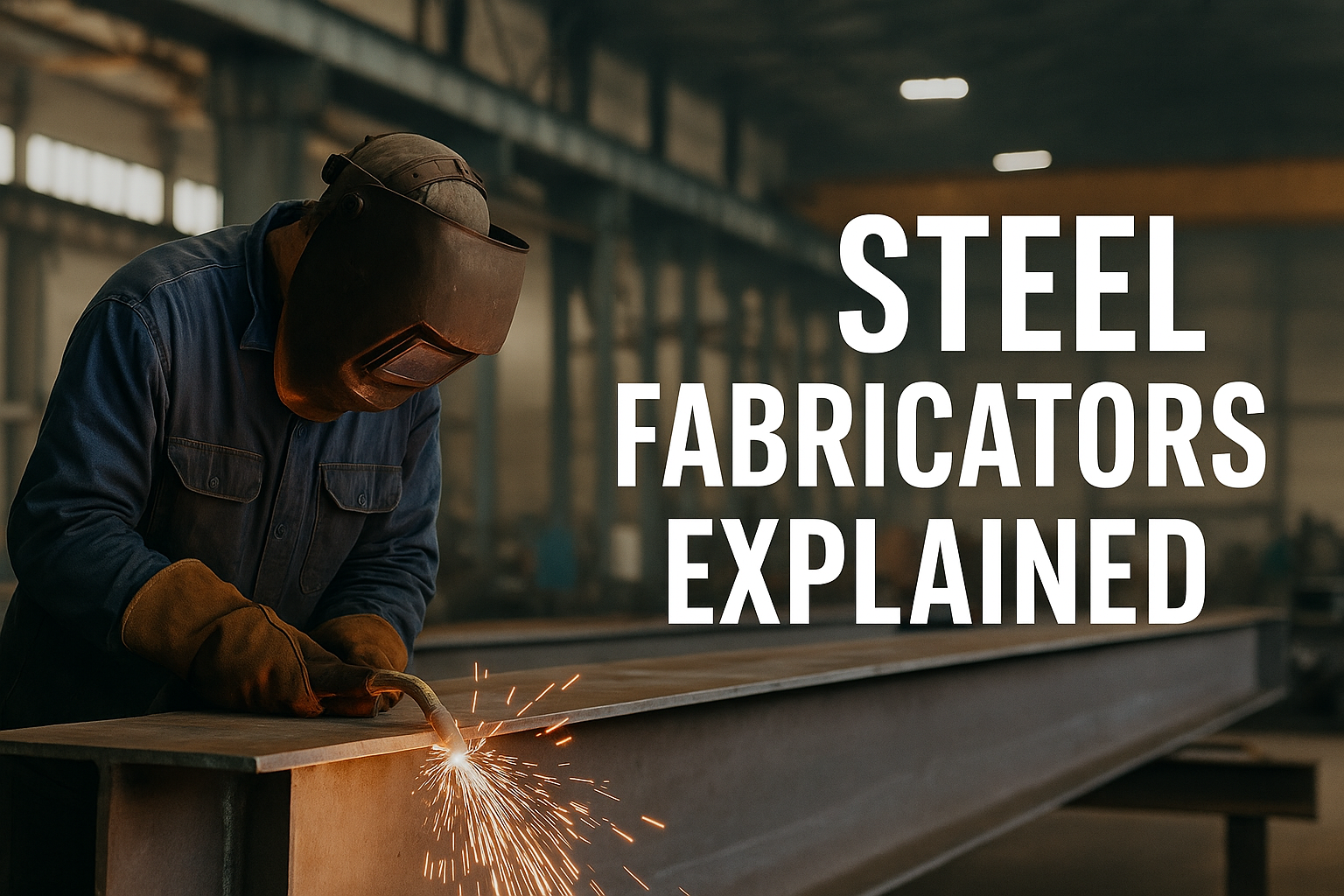When you walk into a high-rise building, drive across a bridge, or see the framework of an industrial plant, you are witnessing the results of expert steel fabrication. But exactly what do steel fabricators do? Understanding the scope of their work reveals just how vital they are to modern construction, infrastructure, and manufacturing.
Let’s dive into the full details, guided by real-world industry expertise.
Defining Steel Fabrication
Steel fabrication is the process of transforming raw steel into customized, usable structures and components through cutting, bending, assembling, and finishing techniques. Steel fabricators take raw materials and shape them into products that meet highly specific engineering and architectural requirements.
This process is fundamental across industries like construction, automotive, aerospace, mining, energy, and heavy manufacturing.
According to a comprehensive review by the American Institute of Steel Construction, the precision and quality assurance standards in steel fabrication directly impact the longevity and safety of critical structures.
Key Responsibilities of Steel Fabricators
| Task | Description |
|---|---|
| Blueprint Reading | Interpreting technical drawings and blueprints. |
| Cutting and Shaping Steel | Using saws, torches, lasers, or CNC machinery. |
| Assembling Components | Welding, bolting, or riveting parts together. |
| Surface Treatment | Sandblasting, galvanizing, or painting for durability. |
| Quality Inspection | Ensuring final products meet engineering and safety standards. |
1. Blueprint Reading and Interpretation
Steel fabricators begin by analyzing architectural and engineering blueprints. Precision in interpreting these documents is critical because even minor errors can lead to major structural flaws.
Fabricators must understand:
Load requirements
Material specifications
Connection details
Welding standards
2. Cutting and Shaping Raw Steel
Using advanced tools such as CNC plasma cutters, laser cutters, and hydraulic presses, fabricators cut raw steel into required shapes and dimensions.
Common cutting methods include:
Plasma cutting
Oxy-fuel cutting
Laser cutting
Waterjet cutting
Precision in this step ensures minimal material waste and exact fits during assembly.
3. Assembly and Welding
Once cut and shaped, the steel components are assembled into larger structures. Assembly methods include:
Welding: Fusing metal parts using intense heat.
Bolting: Using high-strength bolts for removable joints.
Riveting: Traditional method for permanent, high-shear strength joints.
In modern steel fabrication, welding techniques such as MIG (Metal Inert Gas), TIG (Tungsten Inert Gas), and Stick Welding are common depending on material thickness and application.
4. Surface Treatment
To prevent corrosion and extend the lifespan of steel structures, fabricators apply protective treatments such as:
Hot-dip galvanizing
Powder coating
Sandblasting and painting
Surface finishing also enhances aesthetics when steel will remain visible in final installations.
5. Quality Control and Compliance
Final components undergo rigorous inspections to ensure:
Dimensional accuracy
Structural integrity
Compliance with industry codes like AWS (American Welding Society) and AISC standards
Third-party inspections and certifications may also be required, especially for critical infrastructure projects like bridges and skyscrapers.
Real-World Applications of Steel Fabricators’ Work
Construction: Beams, columns, staircases, and structural frameworks.
Industrial: Equipment frames, conveyor systems, support platforms.
Transportation: Truck frames, railway cars, shipping containers.
Energy: Oil rigs, wind turbine towers, transmission towers.
Steel fabricators bridge the gap between raw material and finished, functional structures that are safe, durable, and designed to last decades.
Why Skilled Steel Fabricators Matter
Mistakes in steel fabrication can result in catastrophic structural failures, costly project delays, and legal liabilities. That’s why expertise, certifications, and precision are non-negotiable standards in this field.
Professional steel fabricators:
Follow strict safety standards
Use state-of-the-art equipment
Collaborate closely with engineers and architects
Stay updated on material innovations and fabrication techniques
The Critical Role of Steel Fabricators
When you ask, what do steel fabricators do, the answer is — they create the structural backbone of the modern world. Through precision cutting, welding, assembly, and quality assurance, they transform steel into safe, resilient, and essential components across virtually every sector of society. Their craftsmanship ensures that the skyscrapers, bridges, factories, and vehicles we rely on every day are built to last.
Without skilled steel fabricators, none of our major construction or industrial projects would be possible.



